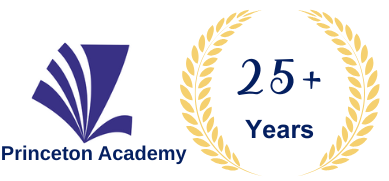By Ms. Sabira Merchant
Introduction
In today’s fast-paced and interconnected world, where first impressions matter and professional success hinges on effective communication and interpersonal skills, the importance of grooming and etiquette cannot be overstated.
One of the key benefits of grooming and etiquette is the ability to make a lasting first impression. We often form opinions about others within seconds of meeting them, and this initial judgment can shape our future interactions. It help us project an air of professionalism, competence, and respect, enabling us to create positive impressions that open doors and build relationships.
Whether it’s a business meeting, a networking event, or a formal dinner, understanding the expectations and norms of behavior allows us to adapt and interact appropriately. From confidently introducing ourselves and engaging in meaningful conversations to dining etiquette and cultural sensitivity, these skills enable us to navigate diverse environments and make meaningful connections.
Ms. Sabira Merchant is a renowned corporate trainer who has mentored Top CEOs and senior management in executive presence. She is most popularly known as the “Hostess” for the Quiz Programme, “What’s the good Word” televised on Doordarshan, for a record breaking 15 years.
Course Content
Effective Communication, Mannerisms and Etiquette
- Active listening and effective speaking skills: Importance of active listening and teach participants techniques to improve their listening skills.
- The power of body language and non-verbal communication: Significance of body language, including posture, gestures, and facial expressions, in conveying confidence, respect, and professionalism
- Handshakes and greetings: Proper technique for handshakes and understand how to greet colleagues, superiors, clients and exchanging business cards with confidence and warmth.
- Art of small talk: Delve deeper into the art of engaging in small talk, including techniques for initiating conversations, sustaining dialogue, and making a positive impression.
- Managing social occasions and office events with grace and professionalism: Appropriate behavior during office social events, such as parties, team outings, and networking events.
Attire and Appearance
- Dressing for success: Guidelines on choosing appropriate attire based on the office culture, industry standards, and specific occasions (e.g., formal meetings, client presentations).
- Decoding office dress codes and standards: different types of dress codes, such as business formal, business casual, and casual, and understand the expectations associated with each.
- What prints and patterns are acceptable in the workplace: Choosing appropriate prints and patterns, emphasizing the importance of maintaining a balance between professionalism and personal style.
- Accessorizing appropriately for different occasions: Suitable accessories, such as jewelry, ties, scarves, and shoes, and how to select and coordinate them with their outfits.
Food Etiquette
- Table Manners and Dining Etiquette: General table manners applicable in various professional dining scenarios, including using utensils, napkin etiquette, and appropriate behavior at the table.
- Handling Difficult Foods: Navigating challenging foods, such as shellfish, chicken, and other items with bones or unique eating methods. Participants will learn techniques for eating these foods gracefully and without discomfort.
- Managing Food with Fingers: Etiquette behind eating finger foods, such as appetizers and snacks like Chaat, samosa, etc, and how to do so elegantly and without making a mess.
- Buffet and Self-Service Etiquette: Buffet-style meals, including queuing, using serving utensils, and managing plates and cutlery.
- Professional Courtesy at Work Lunches and Dinners: Conversation topics during work-related lunches and dinners, including maintaining a professional demeanor and engaging in polite conversation.
COURSE SCHEDULE & FEES
DOWNLOAD COURSE CONTENTS
Please click the button below to download the course content. You'll need to provide your contact information to receive the document.
INCOMPANY/GROUP TRAINING REQUEST
Why Choose Our Incompany Program?
- 🎯 Tailored content specific to your business goals
- 👥 Train entire teams together, saving time and cost
- 📍 Delivered at your location or virtually
- 📅 Flexible scheduling to suit your timelines
- 📈 Increase retention and application of skills
